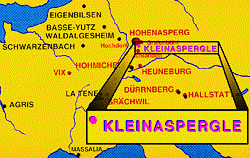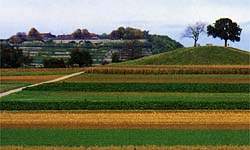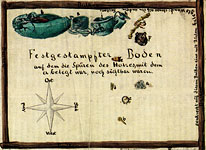Kleinaspergle, Germany.
I. Site
II. Finds
In modern Baden-Württemberg with Kleinaspergle, Hochdorf, Hirschlanden and associated sites.
In 1879, the tumulus at Kleinaspergle ("little Asperg"), only 1000 m south of the great fortified hill, the Hohenasperg, was partly excavated by Oscar Fraas. A tunnel was dug into the enormous hill, which still stood to a height of 7.6 m and was approximately 60 m in diameter. The central, wood-clad chamber was discovered to have been robbed, but a secondary chamber to its west, measuring 2 x 3 m, was found intact.
This secondary chamber, dating to the second half of the fifth century BCE, contained the finds depicted here. A definitive publication did not appear until Kimmig 1988.
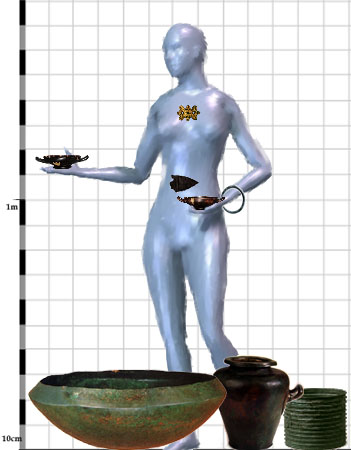
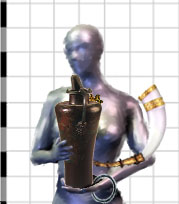
The composites here show a female figure. From the recorded evidence, it is not clear whether the tomb contained an inhumation at all -- a small heap of ashes was unfortunately not preserved or analyzed, but may indicate a cremation burial. There is no agreement in the literature on the sex of the tomb occupant, and Jacobsthal, for example, could not conceive of a woman's burial containing large vessels, Attic kylikes and drinking horns (see Celtic Drinking). Since no weapons of any kind were found, and the rest of the tomb assemblage is consistent with female burials, I have chosen to follow those who advocate a female identification (e.g., Arnold 1991)


